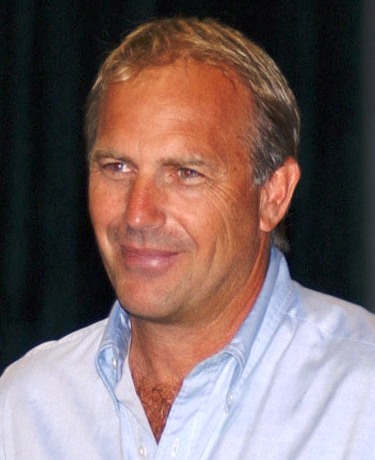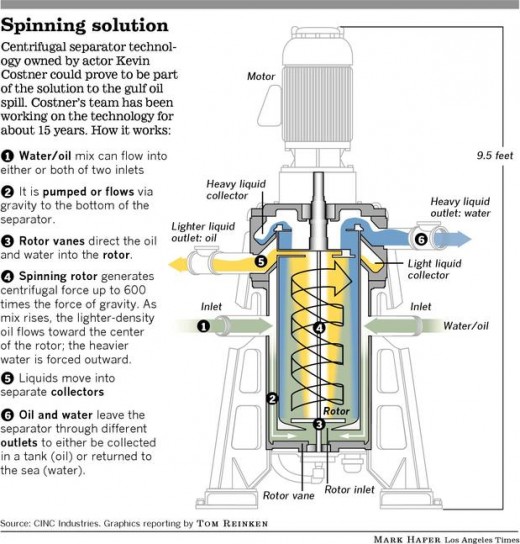Kevin Costner's Oil Separator
The Machine
As of now BP has tested two of the machines (V20) and has ordered thirty-two more. Initially, the reports were that the machine did not work on a collection of oil that had accumulated in a tide-pool. The problem, the oil content was thicker than anticipated.
With some slight adjustments the machine was able to deal with the oil/water solution and began separating and pumping oil and water into two different discharge outlets, one for oil, the other for water.
The machine is designed to separate oil and water with ninety-nine percent efficiency. That is, the oil is ninety-nine percent pure as is the water. This does not meet current EPA standards which has been one of the reasons these machines have not been deployed before.

Unlikely Hero
Costner has faced an uphill battle on this device for a number of reasons. First, a massive spill has not occurred in the United States since the Exxon Valdiz disaster. For this reason Costner has been told by parties who might have benefited from the machine that there was no use for it.
Second, his reputation as an actor. Costner's is known for his roles in action movies. As such he has no scientific or engineering background. What he does have however is money and a keen interest in preventing a disaster that he can completely identify with.
Costner, with the help of his brother Dan, has invested twenty-four million dollars of his own money in developing the centrifuge.
Third, because the Environmental Protection Agency has set standards for the content of petroleum in water and because the separator does not come close to that standard, Costner's company has fought an uphill battle getting federal funding and approval for the machine.
Costner's Work Background
What many people may not realize is that Costner, like so many actors before him, had to work his way through acting school. To do that Costner took jobs on fishing boats, as a truck driver, and as a tour guide. The first, as a fisher-man, means that Costner is painfully aware of how the Gulf of Mexico oil disaster affects the livelihoods of men and women who fish the gulf to earn a living.
Inspiration
What inspired Costner to buy the patent of and invest heavily in this technology was witnessing the efforts of people in Alaska in response to the Exxon Valdiz.
"I'm not a spokesman for anybody, but the ecosystem, that can't speak for itself, the fishermen who can't speak for themselves. They're wondering where an answer is. I'm not on a white horse, I'm not the savior to this thing. But I'm kind of saying like 'I've got a live preserver.'" - Kevin Costner in an interview
Beneficiaries
Because Costner's machine is designed to suck up fouled water and separate the oil and water, both working people who are hurt by this disaster and the oil companies working to recover spilled oil will benefit.
This makes perfect sense for Costner due to his commercial fishing background.

How it Works
The machine is basically a centrifuge. Because water is heavier than oil, the water tends to be in one part of the spinning column of fluid and oil in the other. Strategically placed outlet pipes naturally channel the water or oil in the proper direction for collection.
Deployment
The machine, as designed, is purpose built as first response equipment. That means it is intended to be deployed directly to the site of the leak and process sea-water/oil directly over or near the source of the leak.
For this reason oil that has "weathered," losing some of it's lighter elements to evaporation, is not the ideal medium the machine was designed to cope with.
Much to everyone's surprise and relief the V20 was still able to process this "peanut-butter" consistency oil with slight adjustments.
With this and other tests completed by both BP and the federal government BP ordered thirty-two of the machines for deployment to the Gulf.
The V20
The machine itself is almost ten feet tall, weighs over two tons and can "clean" up to two hundred ten gallons of water/oil a day. Each unit costs about $500,000 dollars which means Costner will have to sell close to one hundred of these machines just to recover his development costs.
- BP's Mismanagement Endangers More Than the Environment
BP had it's start in Iran when it contracted to work in that country through the Shah of Iran. As such it was a solely British owned company with William Knox D'Arcy at it's head. D'Arcy had worked out a deal...








